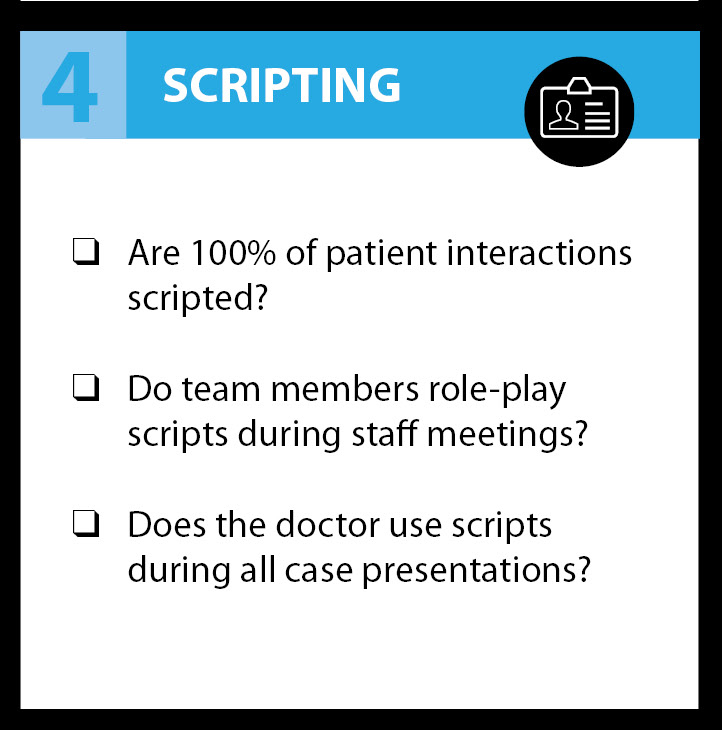7 Steps to Scripting Success
Roger P. Levin, DDS | September 25, 2015

At a time when more dentists are competing for fewer patients, you and your staff need to have first-rate verbal skills. With the right words, relationships grow stronger, loyalty and trust increase, and patient satisfaction soars. Without effective training in patient communications, you’ll have difficulty attracting and keeping patients, increasing referrals and production, and collecting what you’re owed.
Perhaps the best tool for teaching dentists and their teams how to interact with patients is scripting. But what is scripting and what is involved in its implementation?
Making, Learning, and Using Scripts
Serving both as training aids and as templates for all routine conversations with patients, scripts control how the practice presents itself and they help determine patient perceptions and actions. The process of implementing scripts in your practice should include these seven steps:
1. Create step-by-step management systems. All administrative tasks that involve interactions with patients should be mapped out (in writing), to show the sequence of steps needed to achieve the desired result.
2. Assign performance targets to all systems. Total practice success depends on attaining a number of specific objectives, eg, 90% of cases accepted, 98% of patients scheduled at all times, 99% of fees collected, etc. All such targets should be connected directly to the appropriate systems.
3. Write scripts that follow the systems’ steps and work toward hitting targets. Scripting spells out the key points that should be made in conversations with patients, using power words (eg, “wonderful,” “amazing,”) and benefit statements (eg, “beautiful smile,” and “affordable,”) to guide patients toward making the right decisions.
4. Introduce scripts to team members. Your staff will do better with scripts if you explain what they are, why the practice is using them, how training will be handled, and what the results should be.
5. Conduct training. Role-playing is the perfect technique for mastering scripts, with team members taking turns playing the role of patient or employee. With this technique, staff members can learn how to follow the scripts in a way that feels natural to them by personalizing rather than memorizing. Be sure to schedule specific days for this training, and integrate it into regular staff meetings.
6. Introduce scripts in real situations. Once you and your staff are accustomed to following scripts, begin using them with actual patients. You’ll soon become comfortable with this communication technique.
7. Monitor results and make changes as needed. Check how well actual performance measures up against your targets. Ask yourself the questions in the table below. If you’re falling short, modify your scripts or training to improve results.
Conclusion
Implement script-based patient communications in your practice by following these essential steps, and you’ll reach performance targets, heighten patient satisfaction, reduce stress, and increase production.
Click here to download a free Practice Performance Matrix™, along with instructions about how to rate your practice and interpret your score.
Dr. Roger P. Levin is a third-generation general dentist and the Founder and CEO of Levin Group, Inc., the largest dental management and marketing consulting firm in North America. As a leading authority on dental practice management and marketing, Dr. Levin has developed the scientific systems-based consulting method that increases practice production and profitability, while lowering stress. A keynote speaker for major dental conferences, Dr. Levin presents more than 100 seminars per year. He has authored 68 books and more than 4,000 articles.




